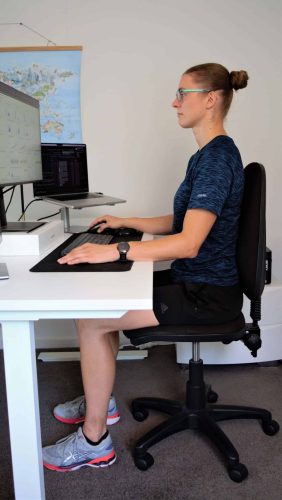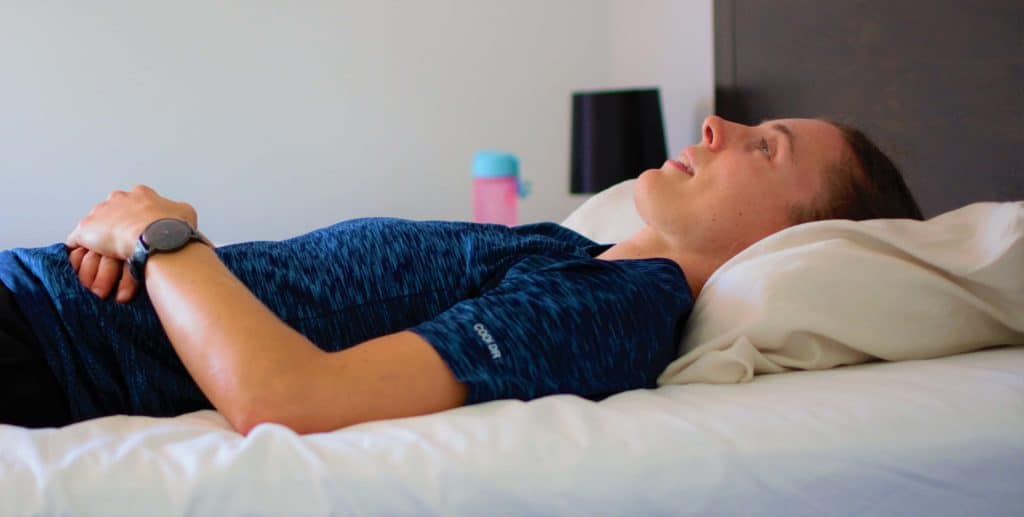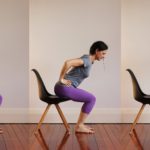
Kim Hoffmann
NASM CES (Corrective Exercise Specialist) and Certified Personal Trainer
Note — The article was checked and updated January 2023.
On average, sedentary lifestyle has increased by 83% since the 1950s. With that, our overall health seems to have declined.
Basic and fundamental principle to our evolution was to be active and move, and by being active, our posture was always kept in check.
Bad posture can cause a myriad of health issues, and in this article we will mention some of them, as well as provide examples on how to have great posture while we sit, sleep and walk.
Why is good posture important
The main reason for having a good posture is to have a healthy spine, muscle and joint function. The aim is to move without pain and have no restricted range of motion.
Having good posture also helps decrease the wear and tear of the joints that could result in arthritis, and we feel less tired because our muscles are working efficiently. Other reasons are better air and blood flow, and no digestive problems or mood swings.
Good posture is also very important for moving well when we’re older because exercise can minimise the effects of ageing and even increase our life expectancy.
Health Effects of Poor Posture
Poor posture can affect our muscles, tendons and even our skeleton and organs.
For instance, our joints can be pulled out of alignment and how we breathe and digest food will be affected. These things happen over time, so improving our posture is the best and easiest way to stave off these negative effects.
List of health effects:
- Musculoskeletal system misalignment
- Spine curvature (wear and tear of the spine)
- Exacerbate arthritis (Osteoarthritis)
- Other spinal conditions often exacerbated by poor posture
- Neck, shoulder and back pain
- Headaches and migraines
- Temporomandibular joint syndrome (TMJ)
- Fatigue
- Decreased flexibility and movement (muscle and joints)
- Decreased circulation
- Affected balance and increase risk of falling
- Affected quality of sleep
- Affected digestion and heartburn
- Incontinence
- Constipation
- Decreased sexual function
- Harder to breathe
- Decreased lifespan
Examples of Good posture
Below we will find some examples of good posture in different positions. You may find that changing posture can be uncomfortable at first, but this is because your body is not used to it.
Always make sure to change your position every 20-30 minutes. This can alleviate some stress and discomfort.
Good posture while sitting
When sitting, keep your feet flat on the floor with your knees at hip height.
Your desk should be at a level where you can have your elbows bent at about 90 degrees.
Sit back with your lower back against the chair and have the screen at eye level.
Engage your core by moving your belly button towards your spine and imagine bringing your hip bones together. This supports the lower back.

Sitting like this on the couch is very unnatural and can make watching TV less relaxing, but you can still make sure your posture is good. Sit with your lower back and head supported.
Good posture while standing
When you stand, especially for long periods of time, it is essential to keep good posture because it’s very easy to get low back pain.
Good posture when standing means standing upright with your chest out and shoulder back.
Ideally, you want your ears above your shoulders and your shoulders right above your hips, knees and ankles.
As with sitting, tighten your core muscles to support the lower back.

Good posture while walking
Good posture while walking is just as important as any other.
- Keep your head up high and look forward
- Keep your back straight and shoulders back
- Gently tighten your core muscles to support your back
- Swing your arms with a slight bend in the elbow
- Squeeze your glutes at the end of each step
- Your foot should roll from the heel to the toes.
Good posture while lying down or sleeping
Your position when you lie down or sleep is very important, because we spend a lot of time asleep.
The best way to sleep is on your back, but it’s ironically the least favourite position. No matter your preference, you can still ensure using the best possible posture.

Always try to have your back and head supported. When lying on your side, have a pillow under your head that doesn’t put your neck at a weird angle.

Keep your hips stacked rather than one leg over the other, because it keeps your spine straight.
Related Questions
1. Can poor posture cause permanent damage?
There comes a time when interventions like exercise and physiotherapist or chiropractor will only help minimally.
The natural curves of the spine will change or lose shape and the ligaments in and around the joints will have stretched beyond repair.
That being said, it is never too late to work on better posture. It may just take longer before you notice any change.
2. Can chiropractic adjustment help correct poor posture?
The chiropractor can help correct poor posture by creating more mobility and widen range of motion through adjustments, but you will need to work on it yourself with exercise.
The adjustments may loosen up the muscles which will allow for better communication between the brain and the nerves. But in the end, the only way to really correct your posture is by doing exercise.
3. What type of chair is good for posture?
When you’re shopping for a new chair, look for one that has the following:
- Lumbar support
- Adjustable height
- Adjustable armrests
- A seat base that adjusts to comfortable angles and sits up straight
- It twists or swivels on its base
- Wheels
Even better is to look for a sit-stand desk with chair or stool, so you can alternate between sitting and standing.
If you liked the article, please leave a comment below. Also, please share it with your friends and family, especially if you think that someone might need to work on their posture.
Kim Hoffmann is a certified Personal Trainer and Corrective Exercise Specialist based in Auckland. She also specialises in women’s health and fitness by taking into consideration the menstrual cycle and hormones and implementing them in different workout plans. The workout methods and routines include free weights, suspension straps and boxing, as well as strength training and high intensity.
Kim’s passion is helping people move better and improve their quality of life. She helps men and women of all ages achieve their goals and also offers online classes and consultations. You can see more of Kim at Snatch Fitness.






